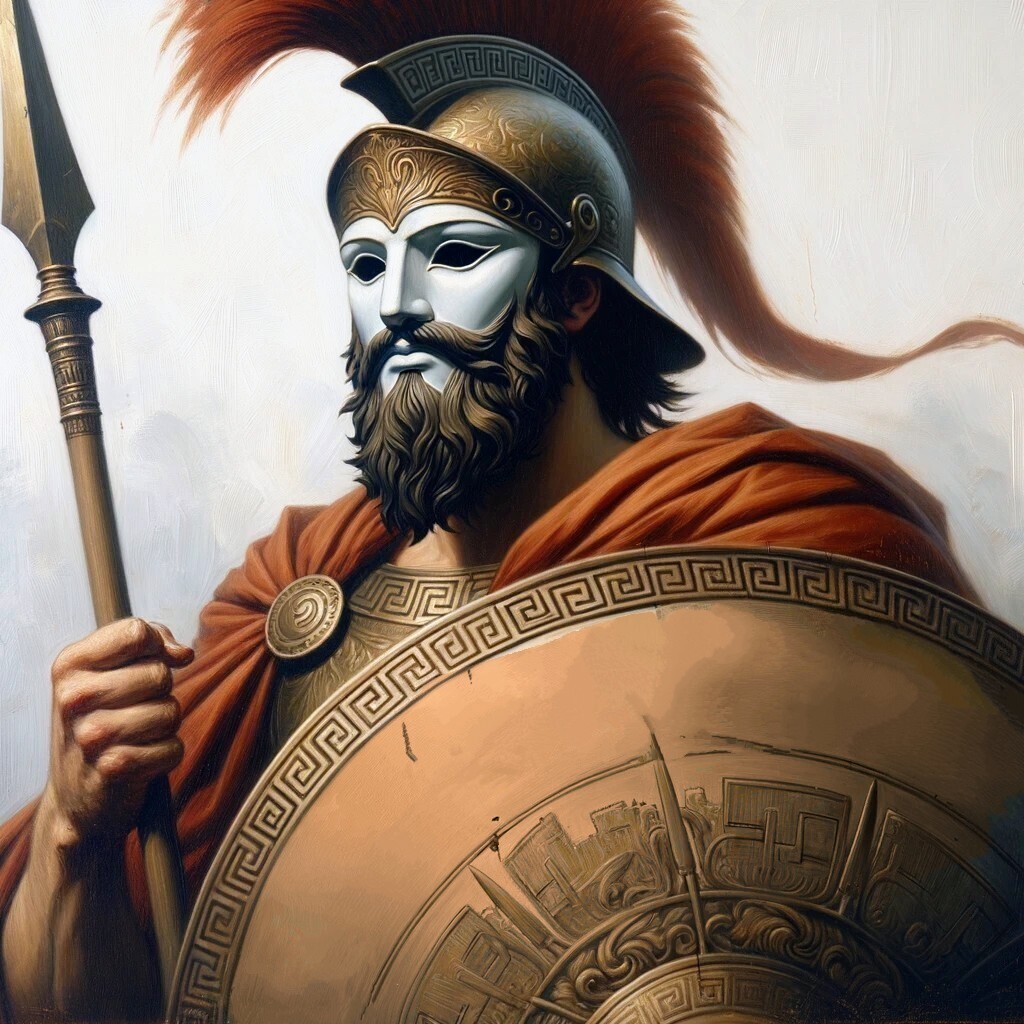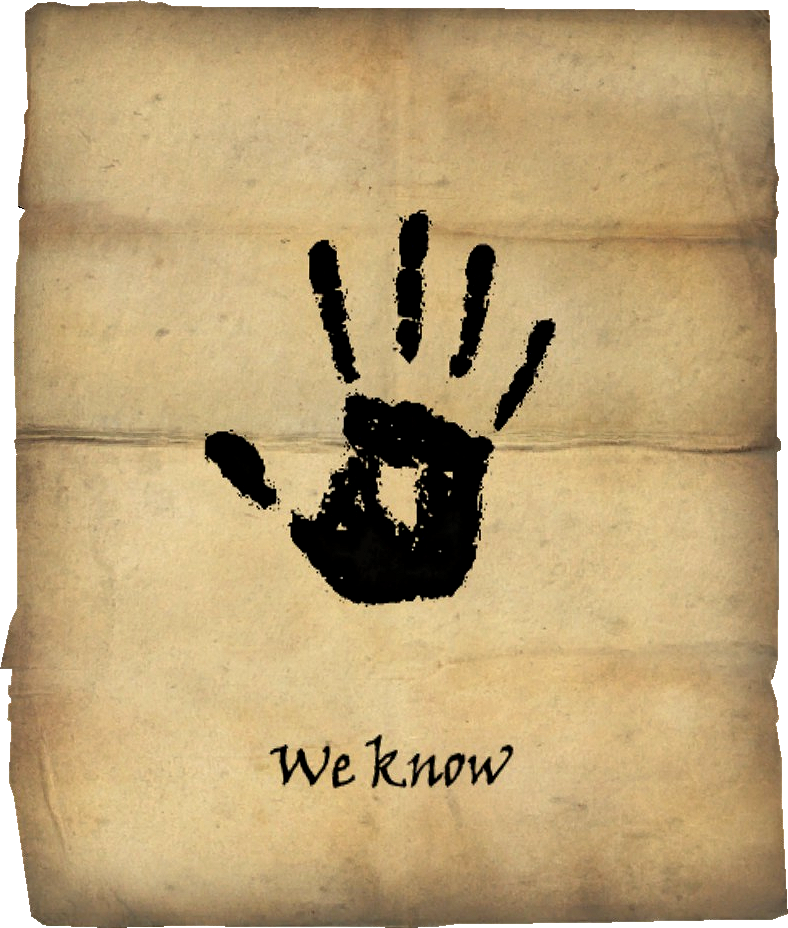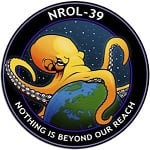
Why Civil Resistance Works the book that 2x figure comes from has some major controversy about cherry picking data as well as playing with the definition of peaceful protest.
If peaceful protests worked (as good as this article suggestions) the BBC wouldn’t be writing about them.
Claims without any supporting evidence aren’t that interesting.
Edit: OP changed his post after I called him out for not referencing any sources
How to blow up a pipeline has a chapter on the topic.
You can also read the original book and check the examples.
P.C. this is article about the fourth mentioned protest in the article, and literally the second paragraph is about clashes. There are 11 casualties during this series of protests.
But you knew that with your high standards of verifying information right?
I’m not the one making claims. If you want to make a claim cite a source.
The article also made claims. Did you check them?
P.C. this is article about the four mentioned protest in the article, and literally the second paragraph is about clashes.
Which states
Clashes break out as police try to disperse the crowds and eight demonstrators are killed.
Police killing protesters makes a violent movement?
They’re not exactly an armed group of combatants coordinating attacks.
Working with Maria Stephan, a researcher at the ICNC, Chenoweth performed an extensive review of the literature on civil resistance and social movements from 1900 to 2006 – a data set then corroborated with other experts in the field.
Research.
How to blow up a pipeline has a chapter on the topic.
Research?
But you knew that with your high standards of verifying information right?
Do your standards measure up to that?
Yeah, look at the Iraq war protests, they didn’t amount to anything because they were peaceful and easily ignored by the media.
This was going to be my counterexample too. Millions protested in the US, UK, Australia, and elsewhere before any troops were committed and it still didn’t help. I dont have solid numbers but I’d be shocked if less than 3.5% of people were involved. They were the biggest protests ever at the time.
I personally feel like a lot came out of it, though. The USA left Iraq for example.
The USA actually still had troops in Iraq, Syria, Jordan, etc. And the protests were to prevent an invasion from happening in the first place, not to go in, kill a million people and then 2 decades down the line throw up your hands and say ‘that was a mistake’ with no consequences for anyone that pushed for it.
In 2007 there were 170,000 troops in Iraq
In 2010 there were 88,000
In 2024 there were 2,500
And the number there should be is 0, I’m really not sure what point you’re trying to make here. People didn’t want a war in Iraq in 2003, there were mass peaceful protests, and yet it still happened.
The number absolutely should not be 0. It’s a nation which actively funds and mobilizes religious extremists who imprison or execute homosexuals and treat women as cattle.
EDIT: in this context Iraq/nation meant the local populace, not the government
Which wasn’t the case before the invasion, when there were 0 US troops. Why the fuck do you bring up current day when I’m talking about protests that happened over 20 years ago (by people who knew the current outcome was likely)?
post hoc ergo propter hoc. the invention of Facebook was just as much a cause of leaving Iraq. or flat screen TVs. or Blu-ray disks.
which is to say the protests didn’t change anything.
Politicians making decisions based on public opinion has a lot of cause and effect relation. By all accounts it would have been easier to maintain a 40k to 100k presence in Iraq than it was to pack everything up and leave.
please prove a casual link between protests and the ending of the war
-
People opposed the pointless war whose only winners were Exxo n Mobil.
-
People voted the party who started the war out of power.
-
The opposition party withdrew from the region.
doesn’t sound like the protest had any impact. sounds like the votes were the only thing that mattered.
-
deleted by creator
The article pointedly says that non violent protests were more successful because a lot more people were involved than in the violent protests.
Peaceful protest works great under two conditions:
-
Just a metric fuckton of participants
-
The implicit threat of violent protest (e.g. Malcom X behind MLK)
- Your opposition has empathy
Meaning they aren’t somehow making money off whatever you’re protesting…
-
It’s about resistance, not violence per we. Choosing the right kind of resistance for the situation is how change is made. Non violent protesting is for raising awareness and building solidarity. Violence is purely for defense and to show when a line has been crossed. Otherwise your movement will just become the next police state regime, if it doesn’t get crushed outright. People advocating for violence on social media are either bots or bad faith actors trying to stop the movement. Anyone seriously considering violence against the state sure as shit aren’t posting about it on Lemmy.
Name one non-violent protest that changed the material conditions of those protesting, I’ll wait.
We’re at that point and yet has Trump been impeached for denying due process and trying to create a process with ice to deport people without a trial to a foreign prison for life? Or for blatantly ignoring orders from federal courts and the Supreme Court?
Until Trump is in prison or tried for his crimes this article doesn’t sway my opinion at all. Fact is too many loopholes exist in the rule of law in the usa. Only way to fix it is creating a new government with a new constitution. The executive branch as it is has way too much power consolidated. The current form of government cant go on as it is. Especially because of how much money and bribery is now involved.
I dont see this being resolved peacefully. Fascists never go peacefully. NEVER
Is this why the opposition always tries to escalate the peaceful movement into a violent one?
That, and so they have an excuse to incarcerate or kill the leadership, see: Haymarket 7, Joe Hill, &c
No, it’s because the opposition is the establishment, and violence is a tool the establishment uses to… well, stay established.
Okay but who’s the one defining a protest as violent? You get enough people together and you’re going to have some aseholes that damage property but are the minority. If chocolate can have 5% bugs, then protests should be able to have 5% violence and still be called peaceful.
Or heck, if people react when police instigate, should that be called a violent protest?
Cops are great at making any protest violent.
This is an important question. I believe the research in question defined movements by the predominant tactic used, even if there was a small amount of violence.
So protests like the anti-ICE ones in LA would probably count as non-violent in the research.
Edit: Here is a more recent work by the same author that more directly engages with some of the questions and criticisms that emerged from their initial work the BBC article is discussing.
https://www.annualreviews.org/content/journals/10.1146/annurev-polisci-051421-124128
History is written by the victors.
Okay but who’s the one defining a protest as violent?
I’ll give you a hint, it rhymes with cocks
Socks?
Rocks.
Docks!
And Birkenstocks
Rocks?
It’s it wrong to throw rocks when people are shooting you with rubber bullets?
The guys with Glocks? Agreed.
Okay but who’s the one defining a protest as violent?
The same people who write the history books. History is written by the winners, and when they write those books the protests that led to them winning are written up as being non-violent. It’s like “terrorists” vs. “freedom fighters”. If they succeed, they get to write the history books and they’re freedom fighters. If they lose, the other side writes the history books and they’re terrorists.
I don’t want to ask about the chocolate
Okay but who’s the one defining a protest as violent?
From the article
Perhaps most obviously, violent protests necessarily exclude people who abhor and fear bloodshed, whereas peaceful protesters maintain the moral high ground.
Chenoweth points out that nonviolent protests also have fewer physical barriers to participation. You do not need to be fit and healthy to engage in a strike, whereas violent campaigns tend to lean on the support of physically fit young men. And while many forms of nonviolent protests also carry serious risks – just think of China’s response in Tiananmen Square in 1989 – Chenoweth argues that nonviolent campaigns are generally easier to discuss openly, which means that news of their occurrence can reach a wider audience. Violent movements, on the other hand, require a supply of weapons, and tend to rely on more secretive underground operations that might struggle to reach the general population.
Violent protests seems to mean a violent campaign of armed, planned attacks.
I doubt that would include unplanned outbreaks of violence from people not organized for that purpose.
We can have a little violence. As a treat!
Are you arguing “it’s just a few bad apples” in defense of protests?
This is awkward.
I assume you’re comparing this to rhetoric around cops. Cops are ideologically and organizationally unified with top down command structure and they protect one another even in cases of wrongdoing or violence.
Most modern protests are just random people who chose to show up. These are totally different situations.
Of course they’re totally different. But it’s a funny comparison since the two groups are so related.
YES, protesters are freely associating members of the general public, whereas the police are vetted and trained professionals, payed by taxes to “uphold the law”.
They should be held to a higher standard!Well duh. Just was kind of funny.
You’re right. We should fire the bad protestors.
And end qualified protestor immunity!
Bravo. I laughed. I just thought the initial comparison was silly.
Soros HR is no joke!
/s
What is awkward is how you failed to realize how insanely dumb and context-free your logic is to come to such an assinine conclusion…
Or how you presume there’s any conclusion or point. Just a silly observation. The two groups, protectors amd cops, are very related. It’s just a silly comparison. I’m not arguing any actual point.
Sensitive bunch. I’ve literally agreed with ACAB for a long time.
Chenoweth has valid points worthy of debate but I have to say, I’m never going to get my political philosophy on direct action from the fucking beeb.
I want philosophy direct from the Monarch! /s
It’s also important to remember that non-violence serves the interest of entrenched power. The state is at its core a violence-control structure. When people excersize the power of violence in their own interests, the state must reassert it’s dominion or risk collapse.
Non-violent requests can be accommodated without elites feeling like their ill-gotten power is threatened. But it’s often the violent demands that scare them into doing so.
My theory is that you need both. You need figures that are non violent, but also the threat of more violent leaders around the corner if the non violent ones get ignored. You need Malcolm X to make MLK look like the compromise.
The phrase that’s been rolling around my head is “credible threat of violence”.
100%. A credible threat of violence is the real sweet spot, it’s the currency that the whole world operates by. Actual violence is primarily only useful for establishing that threat.
Like, Brian Thompson was an evil person but he was just a cog in a machine and not that hard to replace. However, his killing spooked the industry, and at least for a time, they stopped denying so many claims, which saved many lives - because there was a credible threat that if they deny someone’s claim, they (or someone who cares about them) might kill those responsible. On the other side of the equation, the state was very concerned about finding the killer/someone to pin the blame on, because they needed to establish a credible threat of violence against anyone who might follow his example.
People in America seem to love “going postal,” just one big dramatic act that only you know about and that you won’t walk away from. But that doesn’t really set up a credible threat for the future. Thompson’s killer at least had the good sense to try to get away - if he did, then he could continue providing a credible threat, and he would also provide a “proof of concept” for people looking to fight back without necessarily dying.
Ideally, if you could have a more formal organization that could lay out demands and red lines, it would add to predictability and help keep the threat of violence consistent and predictable. Otherwise, there’s just a vague sense that maybe someone out there will be set off by something, but it’s hard to negotiate with that, hard to say which actions might set someone off. Stochastic violence isn’t ideal, but if more formal organizations are subverted in the various ways they are, then violence becomes less controlled and directed, and the credible threat of violence becomes harder to establish.
I think you are equating those with disruptive. Peaceful doesn’t necessarily mean non-disruptive. Peaceful and disruptive protests can certainly still make people in power sweat
Strikes are peaceful and disruptive
Shutting down freeways can be peaceful and disruptive
Boycotts are peaceful and can be disruptive
Sit-ins are peaceful and can be disruptive
etc.
Not that 3.5% is necessarily an iron-clad guarantee
Absolutely. We are seeing some great civil resistance tactics in the anti-ICE protests right now. These are quite different from rallies where people just stand around, they are actually interfering with ICE and slowing down their abducitons. If enough people participated, they could shut them down altogether.
That said, it’s risky too. The police will retaliate with violence, which sucks if you are the recipient. But the imagery of peaceful protesters being attacked is great propaganda.
‘France’ has entered the chat
but YS(also)K: correlation does not equal causation.
a non-violent protest like the ones described in this article can only commerce, if it is not opposed by state sponsored violence. and that’s usually indicative of a government that’s already falling apart.
Yes, thank you. It seemed bizarre to me as I was reading the article that this point is not brought up at all. Of course, it’s impossible to perform controlled realistic experiments to disentangle the effects. But to not even acknowledge this crucial limitation in the research makes the reporting and research deeply flawed. The research would really need to take into account each conflict’s preconditions, which is a very daunting task, to become more reliable. I understand it’s hard to do this research, but it’s only fair to demand that researchers temper their conclusions based on to the limitations. That kind of rigorous approach doesn’t sell as many books or lead to as many media appearances though, sadly.
This is actually rewriting history.
The Philippines had multiple militant movements but notably the Reform the Armed Forces which had orchestrated and abandoned a coup that had popular support kicking off the protest movement.
Sudan was a military coup that overthrew bashir and then massacred protestors and was actually backed by American OSI NGOs.
Algiers street protests were illegal and they combined general strikes with police clashes and riots even though they were subjected to mass arrests.
For Ghandi MLK jr and others mentioned there were armed militant groups adding pressure. My take away is you need both approaches.
Without demonstrating the ability to defend your nonviolent protest with devastating results it just gets crushed. If you are militant with no populist public movement backing your ideals you get labeled as terrorists and assinated by the feds.
And you need backing of the mass public. Keyboard warriors who sit on their ass and don’t get out there won’t work.
are 2x more likely
Meaning, there can be instances where it’s true or not true.
66% of the time it works every time.
This is a really common misunderstanding of how nonviolent movements actually work, and frankly gets the causality backwards.
You’re right that successful movements often have both violent and nonviolent wings - but the nonviolent components don’t succeed because of the violent ones. They succeed despite them. The research is pretty clear on this: nonviolent campaigns are actually more likely to achieve their goals than violent ones, and they’re more likely to lead to stable democratic outcomes.
Nonviolent movements get labeled as extremist precisely when they’re associated with violence, not when they’re separate from it. The Civil Rights Movement’s greatest victories came when they maintained strict nonviolent discipline - Birmingham, Selma, the March on Washington. Every time violence entered the picture, it gave opponents ammunition to dismiss the entire movement.
The “good cop/bad cop” theory sounds intuitive but doesn’t hold up to scrutiny. What actually makes nonviolent resistance effective is mass participation, strategic planning, and moral leverage - not the threat of violence lurking in the background.
You talk about research, so I’m curious: has any nonviolent campaign succeeded without an accompanying violent campaign?
Yes, but it’s complicated. I’ll use Iran’s long tradition of nonviolence as a case study.
In the late 1800’s when the shah tried to sell out tobacco farmers to foreign exploitation, and virtually everyone in the country opposed it, resulting in a tobacco boycott. Virtually everyone in the country participated it, including members of the shah’s own harem, and religious leaders issued a fatwa condemning anyone who violated it. The shah was forced to cave to pressure and reversed the decision.
This boycott movement helped for organization that would set the stage for later (largely peaceful) protests that led to the shah signing a constitution and establishing a democratic parliament. Unfortunately, he died shortly afterwards, and his son was much less cooperative, and called on foreign assistance to shell parliament, and successfully restored himself to power.
During WWI, Iran was invaded by the Ottoman, British, and Russian Empires, and the country suffered greatly from disease, famine, and the Armenian genocide, leading to over 2 million civilian deaths during the period. The Qajar dynasty collapsed, as did the Ottoman and Russian Empires, allowing Britain to dominate the power vacuum. They supported the new Pahlavi dynasty into power, there was a parliament, but the shah generally appointed whoever the British told him to as prime minister.
At this point, oil had been discovered in Iran, and the Iranians were stuck with an awful, exploitative deal that the previous dynasty had signed, as part of their general policy of selling out every part of the country to foreign colonizers so the shah could have a bigger harem. This deal was substantially worse than the general deal the US offered (which was generally 50/50 between the country that owned the oil and the country that built the infrastructure to extract it). But the terms didn’t actually matter because the British violated them all the time, vastly underreporting how much oil they were extracting so that they paid virtually nothing, and the Iranians had zero oversight of their records. Britain relied on this oil to be one of the richest and most powerful nations on the planet, while the Iranians remained some of the poorest people in the world.
For the next several decades, the Iranian people repeatedly asked Britain very nicely if they would possibly consider not stealing all their oil. And for those decades, the British completely stonewalled them, refused to consider any sorts of concessions whatsoever. Even with their own, hand-picked prime ministers, they still stonewalled them.
Finally, in the 1950’s, and a peaceful democratic movement successfully pressured the shah to appoint a popular leader, Mohammad Mosaddegh, as prime minister - the shah finally became more afraid of popular discontent than he was of the British. Mosaddegh, after making attempts to negotiate, made a decision with overwhelming popular support, to nationalize the oil industry. This, however, led the British to impose a blockade, crippling the country’s economy.
Mosaddegh was an idealist, and he believed the Americans would see his cause as just, connect it to their own revolution, and back him up against the British. At this point, most Iranians had neutral or positive views of the US, seeing them as well intentioned, if naive, not understanding how long the Iranians had been struggling against British colonialism. All of these perceptions were proven completely wrong, because, rather than backing them up, Eisenhower agreed to use the CIA to overthrow Mossadegh to protect BP’s profits and to ensure British cooperation with NATO and the Korean War. This was the first of the CIA’s coups of democratic governments.
A stark example of this betrayal is that, the day before the coup, a US ambassador called Mossadegh and fed him a false story about how his supporters had been calling the embassy with death threats, and he was afraid he’d have to shut it down. Mossadegh - who had refused to crack down on (CIA funded) protests, or censor the (CIA controlled) press, or seek aid from the Soviets, or otherwise do anything to disrupt the infiltration out of concern for principles and respecting dissent -then issued as public statement calling for his supporters to cool it and stay off the streets. When his residence was attacked, no one was on the streets to come to his aid. He lived out the rest of his life under house arrest, while the shah used his absolute power to hunt down and exterminated the Iranian left - until he finally crossed the US and was himself overthrown by the current government.
When the stakes were low (from a geopolitical perspective), like, some poor tobacco farmers trying to maintain their (still quite poor) lifestyle, nonviolence worked. When the stakes were higher, like, changing the whole structure of the government, nonviolence worked better than one might expect, but generally encountered violent resistance and counter-revolution and fell apart. When the stakes were very high, like, trying to get a world-spanning empire to stop stealing the resource it needed to dominate the world, nonviolence was not very effective at all.
Being in Iran’s position, it really wouldn’t matter what they did to try to appease Westerners, so long as they assert control over their natural resources - so they don’t really bother. The goal of nonviolence is to be “in the right” but Iran’s history proves that you can be 100% “in the right” and still lose because foreigners don’t know/care about what’s being done to you, or are propagandized to side with the oppressor.
This doesn’t necessarily apply to protests in the US, but it can. If you’re a nonthreatening old white lady and your goals are not too disruptive to the empire, then sure, do nonviolence. But if you’re someone who the news could villainize, who people will assume the worst of just because of your race or religion, then they’re probably going to characterize you as violent whether you are or not. And if your goals are something that would disrupt the ruling class’s hold on power, then understand that the only reason they aren’t gunning you down is that they aren’t afraid of you - the real dangerous part about nonviolence is that it can be effective, and if power is threatened it will respond with force.
The research is pretty clear on this:
Lol. What was the methodology on this “research”?
The Nonviolent and Violent Campaigns and Outcomes (NAVCO) Data Project is the world’s leading dataset on the characteristics and outcomes of nonviolent and violent resistance campaigns. The latest version covers 627 mass mobilizations in every country in the world from 1900-2021. The coverage is global but excludes maximalist campaigns (i.e. those seeking to overthrow an incumbent government, expel foreign military occupation, or secede).
Chenoweth and co-author Maria J. Stephan published their first analysis of the comparative outcomes of nonviolent and violent resistance campaigns in the 2011 book Why Civil Resistance Works: The Strategic Logic of Nonviolent Conflict. In this book, the authors aggregated data from 1900–2006 and concluded that, overall, nonviolent civil resistance was more successful in achieving target outcomes than campaigns that use violence. The more recent dataset featured in the interactive tool confirms this trend and extends it into the past decade.
That didn’t remotely answer my question.
It did give the info needed to find this.
Violent campaigns on the other hand were defined as follows: “Violent resistance […] involves the use of force to physically harm or threaten to harm the opponent.” (Chenoweth/Shay 2020: 5). Violent campaign data was primarily collected from different databases including: The UCDP Armed Conflict Database, the Correlates of War database on intra-state wars (COW), Clodfelter’s encyclopedia of armed conflict (2002), and Kalev Sepp’s list of major counterinsurgency operations (2005) (Chenoweth/Shay 2020: 5). To note is that should a campaign at some point during its lifespan shift from a non-violent campaign to a violent one or vice versa, that this campaign is then coded as two separate campaigns (Chenoweth/Shay 2020: 7).
This led me to believe they are analysing in a vacuum but that would only really be true for the Philippines example.
This review is a fantastic in depth analysis of the data and outcomes when violent flanks (apparently the research term describing the parallel movements that are not nonviolent) are included.
https://www.annualreviews.org/content/journals/10.1146/annurev-polisci-051421-124128#f1
Two tables analyse the purported and contradictory outcomes of the flanks in different research projects and papers. The authors conclusions are interesting to me in that he or she believes them to reduce long term success and increase short and mid terms, and also poiints out other factors in table 3 that affect the outcomes. One thing eluded to is that the societies perception of the movements being majority violent or non violent is actually the determining factor in the outcome and that I agree with in societies that presuppose nonviolence as a determining factor for success. I imagine nonviolence is a lit less important when you see yourself as occupied by an external force.
Thanks! That’s very comprehensive.
I directly answered you and provided sources and background.
Maybe try reading on your own without a mentor for granting you reading comprehension
I think what they’re looking for in terms of methodology is what objective criteria they use to determine if a protest is violent or nonviolent, as well as what constitutes success or failure. These are not trivial questions, and there’s lots of debate surrounding virtually any given movement, so to make objective determinations about a large number of such movements raises the question of how they’re resolving all these questions and debates. Some might argue that such questions are inherently political and up to interpretation.
As another user in this thread pointed out, it may be a case of confusing correlation with causation: if a movement is popular, it may be more likely to succeed and more likely to be considered nonviolent, as compared to a less popular movement employing the exact same tactics.
No you didn’t. I asked for the methodology, you didn’t even remotely answer that.
Maybe try not lying about things that are easy to check.
What was the lie? You sound like a sealion, the reference provided was a solid one.
If you want to question the Harvard Kennedy schools methodology then you can provide the evidence.
deleted by creator
Interesting how the paper picks East Timor/Indonesia as a case study but makes no mention of the massacres of the PKI and suspected communists, which the US was ambivalent, if not supportive about.
Any serious study of resistance movements around the world will paint a very different picture, one in which nonviolence is frequently met with slaughter, and people turn to violence specifically because nonviolence failed.
The fact of the matter is that people living in the imperial core cannot be well versed in the history of every country in the world (to the extent that we can even exert influence in the first place), and this allows the media to either ignore things like the massacres in Indonesia, or spin them in such a way to justify the preferred side through biased framing. The thing the paper cites as a major determining factor of success or failure is defections from security forces, but what if those security forces come from thousands of miles away?
Trying to assert a universal principle on a tactical level regarding such broad categories is kind of silly in the first place. It’s too broad. You have to assess what you’re trying to accomplish and formulate a strategy to get there based on the particular situation you find yourself in.
From “The Jakarta Method:”
This was another very difficult question I had to ask my interview subjects, especially the leftists from Southeast Asia and Latin America. When we would get to discussing the old debates between peaceful and armed revolution; between hardline Marxism and democratic socialism, I would ask:
“Who was right?”
In Guatemala, was it Árbenz or Che who had the right approach? Or in Indonesia, when Mao warned Aidit that the PKI should arm themselves, and they did not? In Chile, was it the young revolutionaries in the MIR who were right in those college debates, or the more disciplined, moderate Chilean Communist Party?
Most of the people I spoke with who were politically involved back then believed fervently in a nonviolent approach, in gradual, peaceful, democratic change. They often had no love for the systems set up by people like Mao. But they knew that their side had lost the debate, because so many of their friends were dead. They often admitted, without hesitation or pleasure, that the hardliners had been right. Aidit’s unarmed party didn’t survive. Allende’s democratic socialism was not allowed, regardless of the détente between the Soviets and Washington.
Looking at it this way, the major losers of the twentieth century were those who believed too sincerely in the existence a liberal international order, those who trusted too much in democracy, or too much in what the United States said it supported, rather than what it really supported—what the rich countries said, rather than what they did. That group was annihilated.
Vincent Bevins the author of The Jakarta Method actually wrote a book about why the protest movements of the last few decades rarely achieved their stated goals. It’s worth checking out.
Sounds like bullshit. Just in recent memory: look at Belarus 2021, look at the massive Serbian protests that have been going on for over half a year and the govt is still not relenting.
who knew that standing around shouting and basically doing nothing of any real effect would have… no real effect.
It can have effect when the opposition is relatively weak, e.g. individual small companies or govts that aren’t powerful and authoritarian enough to ignore massive protests.
great, so completely useless in regard to current affairs.
Liberal three-percenter lore?
I mean, I do think non-violent disobedience can be effective, but the state usually makes it violent. State sanctioned protests where most obey most of the rules isn’t disobedience. Is a good start though, and I hope things progress (in a good way).



















